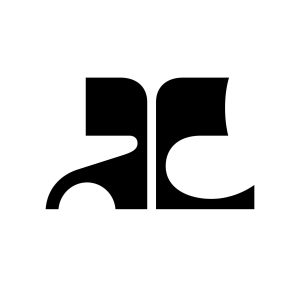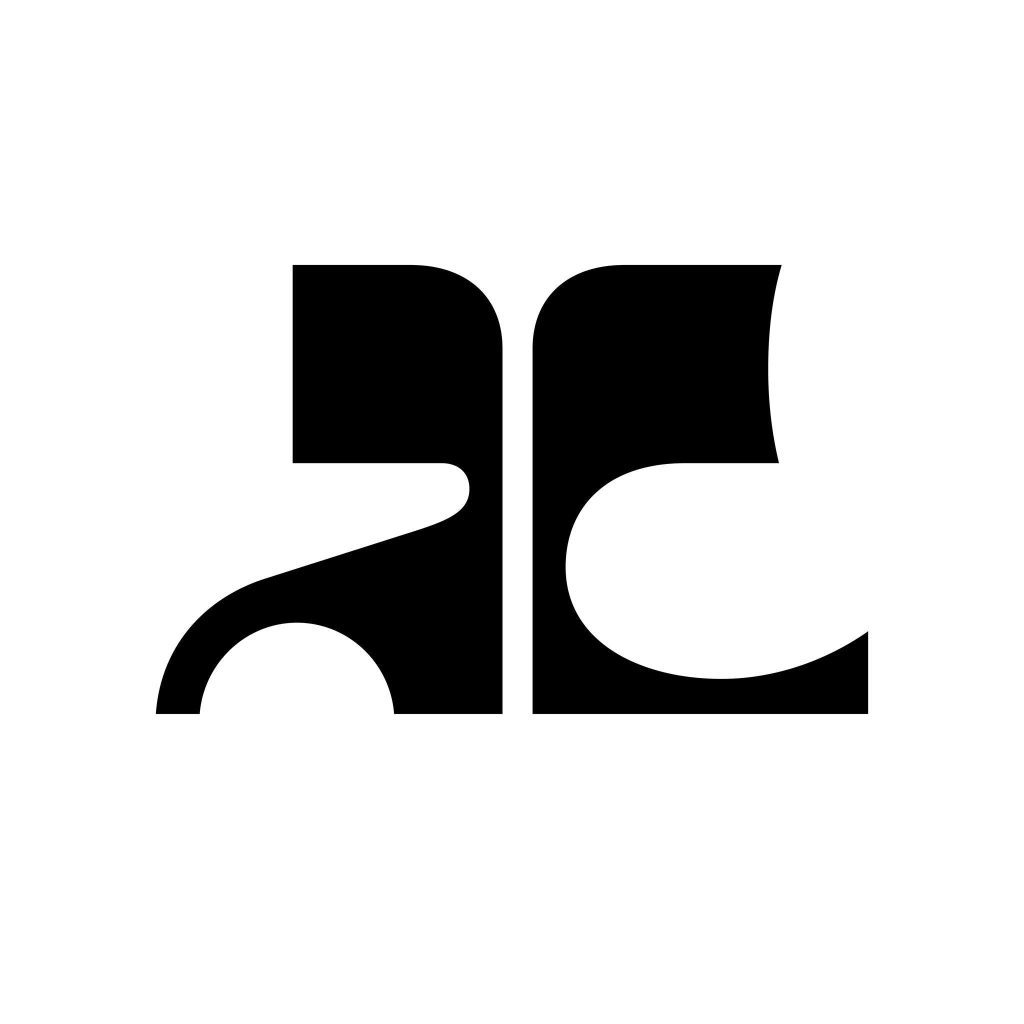Contents
Summary
Founded in 1961 by André and Coqueline Courrèges, Courrèges revolutionised the world of fashion with its emphasis on structure and new materials. The revival of this fashion brand is taking on a new dimension in France and abroad with the decision to change the positioning strategy for its fashion, accessories and perfume activities. It is still focused on its mission of continually offering modern designs albeit in sync with the fashion brand’s original ideals.
History
Born and raised in Pau within the Bearnese region of the Pyrenees, Courrèges wanted to pursue design in art school but his father wanted him to be an engineer. So, the young boy shelved his passion, attended École Nationale des Ponts-et-Chaussées and during World War II, became a pilot for the French Air Force. In 1945, at 25, after studying to be a civil engineer, Courrèges revisited his aspirations and went to Paris to work at fashion house Jeanne Lafaurie before joining Cristóbal Balenciaga.
Courrèges worked for Balenciaga for ten years, mastering the well-sculpted cut and construction of garments. In 1961, he launched his own eponymous fashion house which became hugely popular for its simple, sleek, geometric modern designs, including the “little white dress” and pants that he paired with low-heeled white ankle boots.
Courrège’s autumn 1964 collection evolved the fashion industry with modern, futuristic designs that were unheard of during the time. The collection included tailored tunics and trousers which were paired with his version of the miniskirt. PS Controversy over who created the idea for the miniskirt revolves around Courrèges and Mary Quant.
There was no looking back. His 1964 haute couture was proclaimed the “best show seen so far” for that season by The New York Times. Creative and futuristic, Courrèges’ favoured materials like vinyl and Lycra. In 1967 Courrèges married Coqueline Barrière, his design assistant, and the duo worked together for the rest of his life. In 1968 Courrèges sold a share of his company to L’Oréal in order to finance his expansion, which, by 1972, included 125 boutiques worldwide.
That year, Courrèges was commissioned to design staff uniforms for the Munich Olympics. He began offering menswear in 1973 and also developed fragrances such as Empreinte, Courrèges Homme, Eau de Courrèges, Courrèges Blue, Sweet Courrèges, and Generation Courrèges. In clothing, he remained devoted to the Space Age styles he had established during the 1960s.
By this point, Madame Courrèges had succeeded her husband as artistic director for the brand, Courrèges having retired in 1995 following their successful reclamation of the brand in 1994 despite several ownership changes. In 2011, however, Andre and Coqueline Courrèges sold the Courrèges brand to former Young & Rubicam ad executives Jacques Bungert and Frédéric Torloting and when Andre passed away shortly, President François Hollande went to Twitter to say, “A revolutionary designer, André Courrèges made his mark on haute couture using geometric shapes and new materials.”
Jacques Bungert and Frédéric Torloting relaunched the iconic fashion brand through collaborations with companies including Estée Lauder, Eastpak and Evian. In 2015, Sébastien Meyer and Arnaud Vaillant were appointed and the duo introduced tech touches like heated coats during their two-year tenure with the fashion brand.
The duo, however, sold an initial stake to Artémis, the family holding company of French billionaire François Pinault, in 2015 and left in 2018. Around the same time, the company underwent a restructuring that resulted in the closure of its production facility in Pau, where Courrèges once employed around three hundred seamstresses. Artémis appointed Christina Ahlers and Yolanda Zobel as CEO and Artistic Director, respectively. Zobel focussed on discontinuing production of its signature vinyl, due to environmental concerns.
The creative baton was passed on to Nicolas Di Felice recently. Per Vogue: “The Belgian designer worked under Nicolas Ghesquière twice, first at Balenciaga and then Louis Vuitton—graduating from junior to senior designer—with a stint at Raf Simons-era Dior in between. Today Courrèges is starting from scratch albeit with a design aesthetic anchored in its signature vintage designs.”
Vision
André Courrèges, a pioneering figure in the fashion industry, envisioned a future where clothing was more than just a form of expression; it was a reflection of innovation and progress. His designs were groundbreaking, breaking away from the traditional fashion norms of the 1960s, when he rose to prominence. He is widely credited with revolutionizing women’s fashion by embracing minimalist, modern aesthetics that incorporated clean lines, geometric shapes, and bold, futuristic elements. Courrèges’ vision was driven by the belief that fashion should be forward-thinking, blending form and function to create designs that resonated with the future of technology, space exploration, and societal change.
At the core of Courrèges’ vision was the desire to empower women through fashion. He sought to create clothing that allowed for freedom of movement and expression, breaking away from restrictive garments like corsets and petticoats. This approach aligned with the cultural shifts of the 1960s, a period marked by social revolution and the rise of feminism. Courrèges’ introduction of the mini-skirt, for example, not only symbolized liberation but also demonstrated how fashion could be both practical and stylish. His use of high-tech materials such as vinyl and metal, combined with simple yet bold silhouettes, underscored his commitment to modernity and the progressive spirit of the times.
Courrèges’ futuristic vision extended beyond individual garments to a holistic view of how fashion could intersect with architecture, lifestyle, and even space travel. He imagined a world where people dressed for the future—his collections often featured space-age themes, including metallic fabrics, helmet-like hats, and stark white designs reminiscent of astronauts’ suits. His influence was not just sartorial but cultural, influencing designers and futurists alike. Courrèges’ vision was one of optimism and exploration, where fashion was not only beautiful but also a vehicle for progress, pushing boundaries and inspiring a world yet to come.
Mission Statement
André Courrèges’ mission was to break the mold of traditional fashion and create a new aesthetic that resonated with the modern world. He sought to design clothing that reflected the rapidly changing cultural and technological landscape of the 1960s and beyond. His mission was rooted in the idea that fashion should not only be visually striking but also practical and forward-thinking. By embracing geometric forms, minimalist lines, and innovative materials such as vinyl and plastic, Courrèges aimed to make garments that were not bound by convention. His designs were about freedom—freedom of movement, freedom of thought, and freedom from outdated notions of how women should dress. Courrèges wanted to create a wardrobe that empowered people to look toward the future with optimism and confidence.
Moreover, Courrèges was deeply committed to blending art and function. His mission extended beyond creating aesthetically pleasing garments; he wanted his clothes to be part of a larger lifestyle revolution. He imagined a world where fashion would harmonize with advancements in technology, architecture, and space exploration. By incorporating futuristic themes, like metallic fabrics and space-age silhouettes, Courrèges sought to align fashion with the emerging scientific and cultural progress of the time. His mission was to turn fashion into a symbol of progress, positioning it as a tool for personal empowerment and a reflection of a rapidly evolving world.
Products and Services
One of Courrèges’ most iconic collections was his 1964 “Space Age” collection, which marked a pivotal moment in fashion history. This collection was characterized by its futuristic, minimalist approach, with sleek, geometric designs that embraced modernity in every detail. The use of innovative materials like vinyl, PVC, and metallic fabrics gave the garments a modern feel, while the introduction of the mini-skirt revolutionised women’s fashion. His bold vision included go-go boots, structured dresses, and helmet-like headwear, all evoking the excitement of space exploration and the promise of a new era. Courrèges’ “Space Age” collection remains one of the most influential in the history of fashion, setting the tone for a futuristic aesthetic that continues to inspire designers today.
Beyond his collections, Courrèges also expanded his vision through various services and product lines that furthered his brand’s futuristic ethos. In the 1970s, he introduced his own line of perfumes, such as “Empreinte,” which encapsulated the same spirit of modernity and innovation seen in his clothing. Additionally, Courrèges explored the intersection of fashion and other industries by designing cars and collaborating on projects related to architecture and industrial design. These ventures demonstrated his commitment to a holistic approach to style, where clothing, scent, and even transportation could all contribute to a cohesive futuristic lifestyle. His foray into different services and collaborations solidified Courrèges as a brand that extended beyond fashion, influencing the broader cultural conversation about modernity and progress.
Recognition and Awards
Founded in 1961 by André and Coqueline Courrèges, Courrèges is recognised worldwide for its emphasis on structure and the use of new materials. Movement, purity, colour and light are the hallmarks and distinctive style of Courrèges.
Key Team
Artistic Director Nicolas Di Felice
References
- Official website Courreges
- The new man at Courrèges Vogue
- Courreges SS24 Vogue
- Courreges Resort 2024 Vogue
- Courreges Men’s SS24 Vogue
- Courreges Fall 2023 Vogue
- Courreges Fall 2023 Men’s Vogue
- As It Turns 60, Courrèges Takes a New Direction WWD
- The Radical Simplicity of Nicolas Di Felice’s Courrèges L’officiel
- Facebook page of Courreges Facebook
- Instagram page of Courreges Instagram
- Twitter page of Courreges Twitter
- LinkedIn page of Courreges LinkedIn
- Wikipedia page of Courreges Wikipedia
- André Courrèges dies Washington Post
- Here’s a first taste of Nicolas di Felice’s new vision for Courrèges ID
- French brand Courreges takes retro fashion online Reuters





